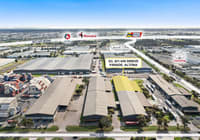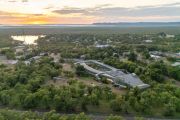
ISPT to plug a gap with Brisbane’s first Intercontinental hotel
Hotels operator IHG is kicking off super fund-backed developer ISPT’s new commercial and retail precinct in inner-city Brisbane with a rebranding and renovation of the building that has for 39 years been known as Hilton Brisbane, but which from the end of June will trade as Intercontinental Brisbane.

ISPT and IHG will invest an undisclosed sum to undertake a two-year renovation of the Harry Seidler-designed Elizabeth Street tower that first opened in 1987 and which will plug a commercial and strategic hole for the operator that has not had a Brisbane hotel until now.
“It’s the one gap in our network that we had,” IHG’s managing director for Australasia and Pacific Matthew Tripolone told The Australian Financial Review.
“It not only provides Brisbane with a wonderful Intercontinental and allows us to give that experience to the state, but also provides benefits to all of our Intercontinental hotels in the region and around the world.”
Hotel developers are targeting Brisbane with different offerings as the host of the 2032 Summer Olympic Games, and a population due to hit 6 million people by 2046 demands more infrastructure.
For ISPT it made sense to go in with a luxury hotel in the mixed-use 150 Elizabeth Street precinct it was developing, said Tom Waters, the developer and fund manager’s head of office, industrial, retail and mixed-use development.
“There was a clear gap in the quadrant for the luxury market,” Waters told the Financial Review.
“Brisbane is really well supplied with other types of hotels, you know, like lifestyle, upscale type hotels, but it’s missing that real luxury brand.”
And there’s opportunity to boost retail property assets in Queensland. After slumping on concerns about the dominance of e-commerce – exacerbated by the pandemic – bricks and mortar retail is enjoying a comeback and ISPT plans to ride that wave.
The one-hectare precinct encompassing the 155 Queen Street retail building, the Wintergarden shopping centre, heritage-listed Regent Theatre seeks to tap broad dynamics such as a growing population and retail sales growth of 3.6 per cent year-on-year as of December, Waters said.
“The Brisbane CBD actually has a lower portion of spend captured within the city compared to both Sydney and Melbourne,” he said.
“So we see that there’s room for growth there when you compare it on a like-for-like basis. And the Queen Street Mall has an extraordinary amount of foot traffic. It attracts over 1 million pedestrian movements weekly, indicating that there’s a lot of people going past the front door.”
But under its masterplan for the site – designed by Woods Bagot – ISPT has scrapped earlier plans to develop a 42-storey, John Wardle-designed office tower, Waters said.

“The time just wasn’t right to deliver a commercial scheme of that, of that scale,” he said.
The new hotel will be a 10-minute walk from the recently completed Queen’s Wharf casino and entertainment precinct, but Tripolone said the Intercontinental’s location made it target a different market of visitor from Star Brisbane, part of an integrated development with the new Star casino.
“All precincts are different,” he said. “It’s no different to Barangaroo when it was imagined and came up in Sydney. Our hotels aren’t down in Barangaroo. They’re in the traditional centre of the city. It’s no different with this one. This is the historical centre of the city.”
After winning a two-stage tender process that pitted IHG against other hotel giants Hilton, Marriott, Accor, Hyatt and Radisson, the company signed an initial 20-year management agreement for the hotel in a Brisbane market that Tripolone said was still in recovery mode for international tourism.
“We feel that the future of the hotel industry in Brisbane is only going to go up,” he said. “Independent reports are suggesting RevPAR [revenue] growth will be very, very strong between now and 2033, in the range of 4-4.5 per cent annually, which is very strong, occupancy will build towards 80 per cent and we feel that there is opportunity in the international market that hasn’t reached pre-COVID levels.”
In contrast to Sydney and Melbourne, which had already made up that lost ground, Brisbane’s international visitor volume has not returned to its pre-pandemic level, Tripolone said.
“So we feel there’s huge opportunity there,” he said.
But while the city still had demand for new hotel properties, high construction and financing costs made new builds costly and riskier than reusing existing properties, Tripolone said.
“Construction is expensive, debt is expensive, and there’s added risk, given the global macro environment at the moment, so new build development, although attractive, is very difficult to pull off,” he said.
“We were so excited about this project, because we’re using the bones of an existing hotel. It’s going to go through an extensive refurbishment over the next two years. These are the projects that I think can stack up a far more, far more quickly than new builds.”











